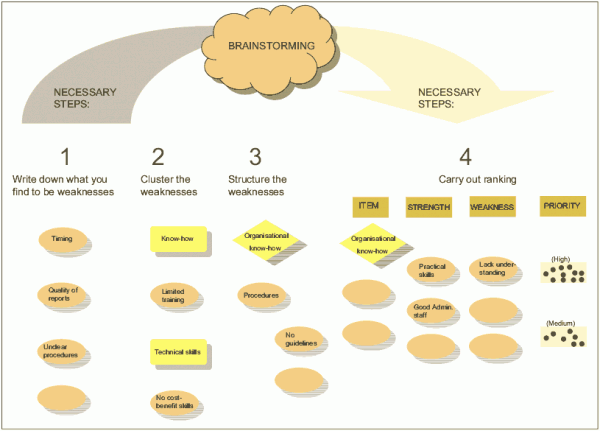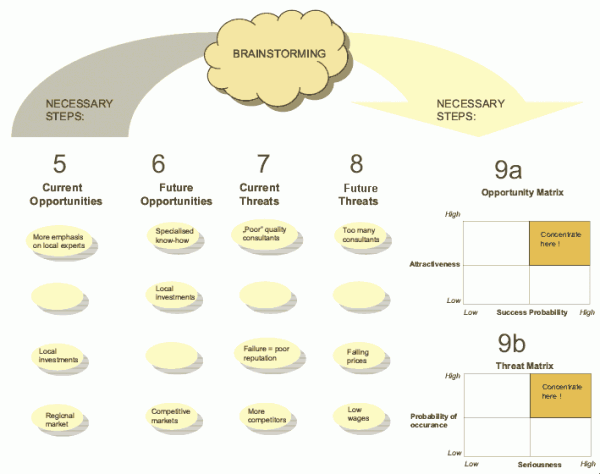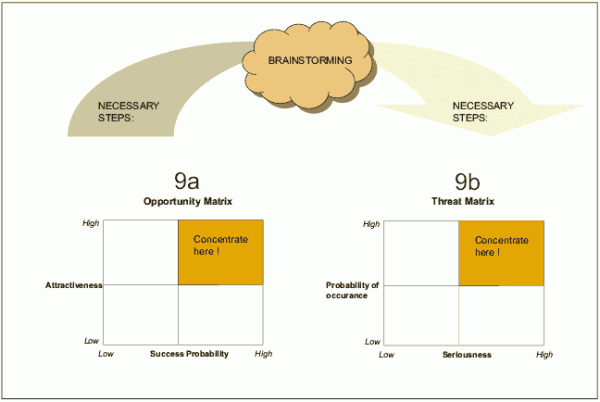Strengths, Weaknesses, Opportunities & Threats (SWOT) - Example: Expanding Market Potentials with SWOT
 |
The general procedures for a SWOT analysis can be best described using an example derived from an exercise undertaken with a group of free-lance consultants who wished to expand their market potentials. The SWOT analysis encompasses two main sections. The first part involves an analysis of strengths and weaknesses. The key for doing the “right thing” is competence in understanding actual and future environments, i.e. market trends and competitors moves or in the public sector (changing) demands of the target groups and interests in project sponsors It is not always the case that this complete understanding exists and identifying weaknesses and threats may not be successful due to unwillingness of admitting these during any analytical step The second part involves the analysis of both opportunities and threats. While the above concentrated very much on internal factors, the opportunities and threats analysis examines external factors that affect the consultants abilities to operate efficiently and effectively. Important in this context is that the external environment has to be described in a dynamic sense by taking into account both the current situation as well as perceived future situation. In other words, the actual situation today describes the existing threats and opportunities while the perceived future trend describes the presently unexploited opportunities, potentials or chances. This approach stands in marked contrast to the strengths and weakness analysis, which looked only at a static picture of the current facts and does not involve speculation of possible future weaknesses or strengths. |
|
|
The following are the necessary steps for the strengths-weaknesses analysis: Step 1:
Figure 1: Procedure for analysing strengths and weaknesses
Step 2:
Step 3:
Step 4:
Figure 2: Procedure for analysing opportunities and threats
On the basis of the initial matrix which was developed for the strengths and weaknesses, the threats and opportunities can be further analysed. Once again, the basic tool for the analytical work is the brainstorming procedure, followed by clustering of the ideas which have been developed and finally, an assessment or judgement of the relevant relationships and priorities.
Figure 3: Opportunities and Threats Matrix
|


